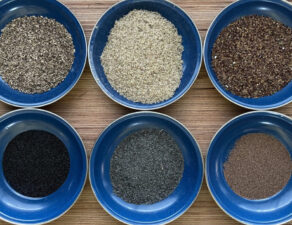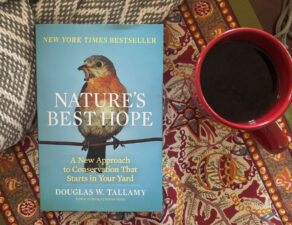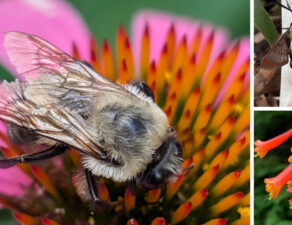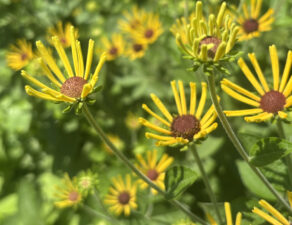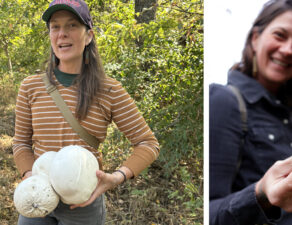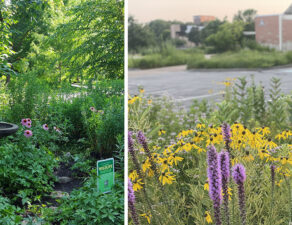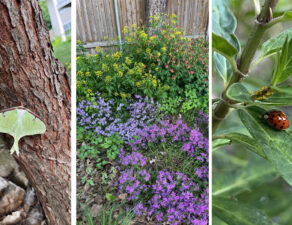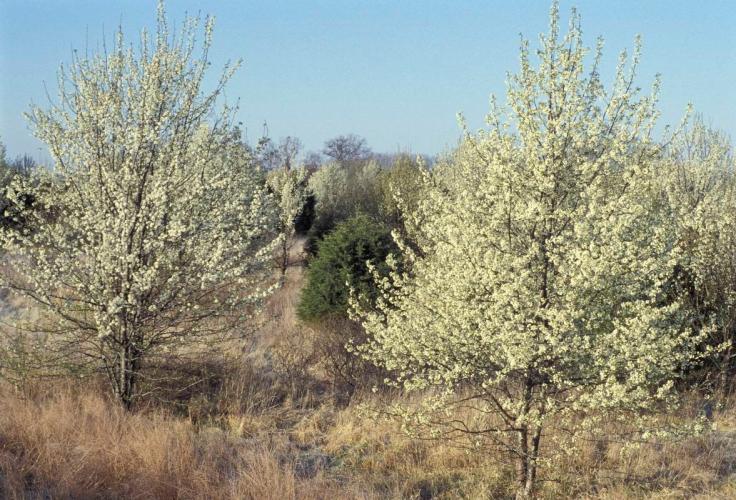
What is so wrong with the Invasive Callery pear tree? Besides their putrid smell, they may seem harmless. However, when any of the different varieties cross-pollinate, their fertile seeds spread far and wide (usually by birds), and those seeds quickly sprout and aggressively take over areas we don’t want them to grow in.
History
Introduced around 1917 from China, the Callery pear (Pyrus calleryana) quickly became a popular American ornamental tree. In the 1950s, garden centers began selling many of them commercially under their cultivar (common) names, including ‘Aristocrat,’ ‘Bradford’ (the most common), ‘Capital,’ ‘Cleveland,’ ‘Chanticleer,’ and ‘Whitehouse.’
Why Are They Bad
You’ve likely seen them. Often Callery pears grow in dense thickets along roadsides, in ditches and fields, prairies, woodlands, or almost any open area. They are sneaky too! They will stay out of sight for up to 3 years while seeds emerge and can remain virtually unnoticeable until they bloom at about five years. By then, they’ve choked out much of the beneficial plants where they took root.
Callery pears meet the very definition of invasive species: “an aggressive, non-native species whose presence causes or is likely to cause economic harm, environmental harm, or harm to human health.” These species grow and reproduce rapidly, devastate habitats, crowd out native vegetation needed for wildlife, and can be time-consuming and sometimes costly to remove.
Callery pears bloom a vibrant white during spring and are easy to identify. Therefore, spring is a great time to remove them from your property. Removing early keeps them from further spreading and damaging native vegetation. For helpful tips on removal, click here.
What Can Be Done
What are we doing about invasives? Deep Roots is working with the Missouri Invasive Plant Council (MoIP), the Missouri Department of Conservation (MDC), Forest ReLeaf, Johnson County Parks and Rec, and other partners to raise awareness of this invasive species because of its devastating environmental impacts. Together, we are working to provide incentives for the removal of Callery pears to homeowners.
Our first event in 2022 is the Invasive Callery Pear buyback/recall program. In April 2022, we will provide a free native tree to homeowners who cut down a Callery pear tree and send us a photo of themselves with their downed tree. Check out all the details here.
Other ways to get involved with Invasive Callery Pear removal:
- Take part in a local native plant sale and provide native habitat to your landscape.
- Volunteer to remove Callery pear trees from public spaces.
- Remove them from your own property. Here’s a link to help you learn how.
- Educate your local garden center or big box store if you see any of the varieties for sale (many garden centers no longer sell them). Here are some talking points.
Interested in learning about other Invasive Plants? Click here to learn more.
